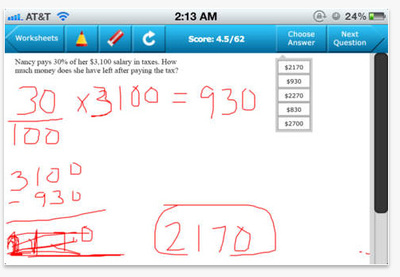

It can handle square roots, logs, absolute value, and more. Scientific Calculator: Just type in any equation you want to solve and Desmos will show you the answer. Hold and drag along a curve to see the coordinates change under your finger. Tap the gray points of interest to see their coordinates. Points of Interest: Touch a curve to show maximums, minimums, and points of intersection. Zooming: Scale the axes independently or at the same time with the pinch of two fingers, or edit the window size manually to get the perfect window. Introduction to the Desmos Graphing Calculator. Get started with the video on the right, then dive deeper with the resources below. Statistics: Find best-fit lines, parabolas, and more. Welcome to the Desmos Graphing Calculator Graph functions, plot data, evaluate equations, explore transformations, and much moreall for free. Tables: Input and plot data, or create an input-output table for any function Sliders: Adjust values interactively to build intuition, or animate any parameter to visualize its effect on the graph There’s no limit to how many expressions you can graph at one time - and you don’t even need to enter expressions in y= form! Graphing: Plot polar, cartesian, or parametric graphs. Sliders make it a breeze to demonstrate function transformations. Using our powerful and blazingly-fast math engine, the calculator can instantly plot any equation, from lines and parabolas up through derivatives and Fourier series. To achieve this vision, we’ve started by building the next generation of the graphing calculator.
Desmos graphing calculator ratios free#
Beautiful, powerful, free math exploration! Brought to you by Explore math with Desmos! Plot functions, create tables, add sliders, animate your graphs, and more - all for free.Īt Desmos, we imagine a world of universal math literacy and envision a world where math is accessible and enjoyable for all students. In this window, there are inequalities for and ( and ) which can be edited to resize the viewport with the domain set by and range set by. To do this, click the wrench in the top right corner (graph settings). Sometimes it is useful to be able to zoom to an arbitrary window. This method, however, keeps the ratio of the domain and range constant. One way to resize it is to scroll down to zoom out, and up to zoom in, and to click and drag to move.

The viewport (the section of the coordinate plane visible onscreen) can be resized to give a better view of your data and functions. Making graphs easier to read Resizing the viewport A beautiful, free online scientific calculator with advanced features for evaluating percentages, fractions, exponential functions, logarithms, trigonometry, statistics, and more. The greatest common denominator of a and b This works with any variable: for a function of where c should be greater than 4, type. To do this, add a restriction of the form directly onto the end of a function. It can be useful to restrict the domain or range of a function. See Desmos regressions tour for an interactive demonstration for plotting regressions. If you see a clear trend, such as the residuals moving in a straight line, parabola, or sinusoidal curve, you know you chose the wrong function to model your data, even if the r-value is small. One way to check whether the form of the function is correct is to plot the residuals, and see if there is a pattern.

The equation you get out is only as good as the equation form you put in. (This is because you provide the form, Desmos only finds the best values for the free variables that it can.) Above, the same points were used, but a line and a parabola were both found. As you can see, the function it finds is not always in the correct form. The value of each constant is shown under your function entry. See the examples below for a demonstration.ĭesmos will find the best constants that fit the points and function you put in. This is saying: "find the constant values m and b that best satisfy for every and in my table, where and. For example, to do a linear regression, you would enter. Īfter you have decided the form your equation should take, substitute " " with " ", " " with " ", and " " with. The enterprising student can extrapolate this to any form they would like, such as. If you want a quadratic regression, the equation would look like. If you want to do a linear regression, the equation would take the form. First, enter the data points in a table as explained in Graphing Points. Performing regression analysis of data in Desmos is simple.
Desmos graphing calculator ratios how to#
Ĭlicking on either of the constraints of a slider allows you to set the minimum, maximum, and step values.įor an interactive demonstration of how to use sliders, click here. Another way to add variables is to type the variable letter, "=", and then a starting value.


 0 kommentar(er)
0 kommentar(er)
